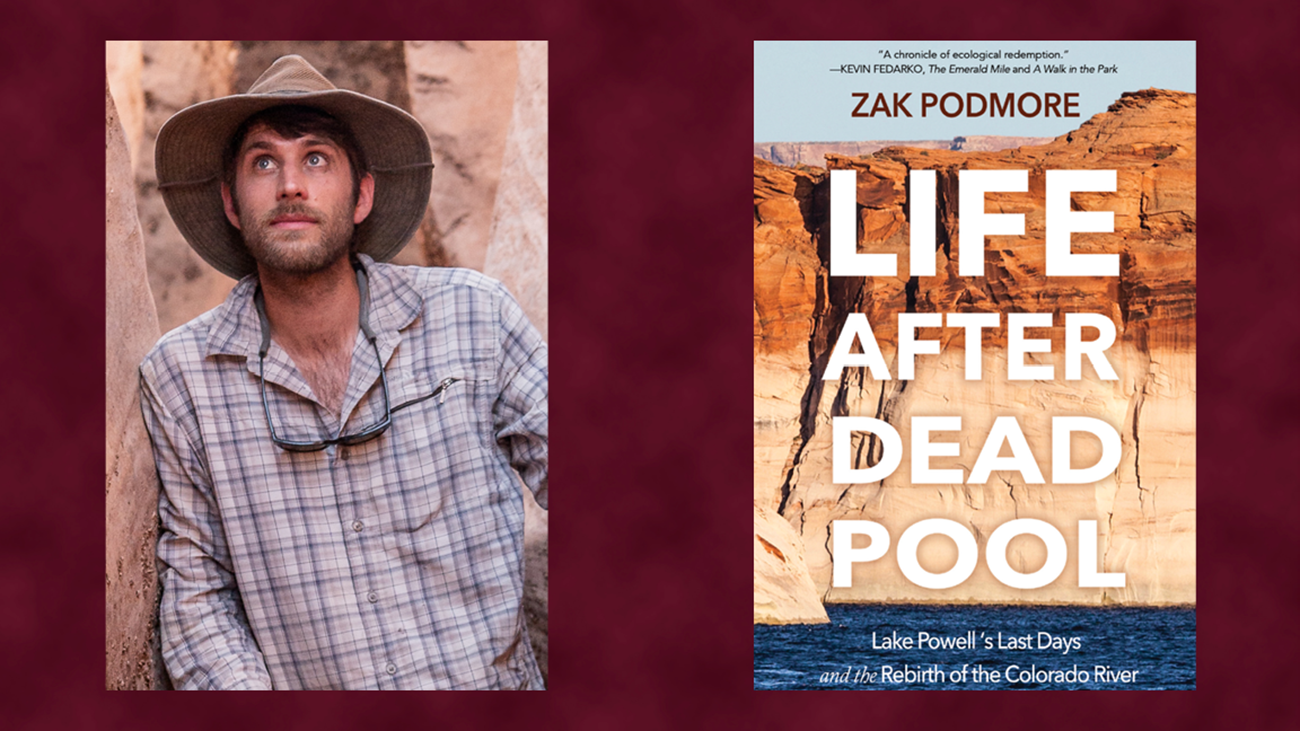- Arts
- Excellence
- Science
- Research
- Featured
- Community
Water Scarcity Book Wins Award from WT’s Center for the Study of the American West
Copy by Chip Chandler, 806-651-2124, cchandler@wtamu.edu
CANYON, Texas — An examination of the unexpected rebirth of an ecological marvel is the 2025 Bonney MacDonald Award for Outstanding Western Book from the Center for the Study of the American West at West Texas A&M University.
Zak Podmore’s “Life After Dead Pool: Lake Powell’s Last Days and the Rebirth of the Colorado River,” published in August 2024 by Torrey House Press, was selected by a CSAW panel for the top prize.
“This is a huge honor,” Podmore said. “I was very surprised and flattered when I got the email letting me know that I had won this award. The lessons from Glen Canyon and Lake Powell are applicable in other areas (of the country) … and I’m honored to be among the previous winners.”
Two semi-finalists also were named: “The State of Sequoyah: Indigenous Sovereignty and the Quest for an Indian State” by Donald Fixico, and “Washita Love Child: The Rise of Indigenous Rock Star Jesse Ed Davis” by Douglas K. Miller.
Podmore will accept his award and offer a reading from his book at a Dec. 11 campus event. Details are forthcoming.
“I am thrilled that the Bonney MacDonald Award committee chose a book that speaks to the most essential issue facing all Westerners—water scarcity,” said Dr. Alex Hunt, CSAW director, Regents Professor of English and Vincent-Haley Professor of Western Studies. “I am all the more pleased because Podmore’s approach to the serious problems facing us is one that points to a hopeful future rather than leaving us in the dry lakebed of despair.”
Podmore, an award-winning author and journalist who has written about water and conservation issues for more than a decade, explores the history and future of Lake Powell, a reservoir controversially created in 1963 in Utah and Arizona when the Glen Canyon Dam was constructed and flooded the eponymous canyon.
“It was a place just as spectacular as the Grand Canyon by all accounts,” Podmore said. “There were thousands and thousands of archaeological sites that were drowned. Winding red rock canyons, rolling sandstone domes and cliffs, glens of green cottonwood trees — all of that was lost under Lake Powell.”
But beginning around 2000, the lake has been losing water at a remarkable pace—which had an unexpected benefit.
“It’s nearing record lows right now. Over 100,000 acres of previously flooded canyon lands have been revealed, and they’re healing really quickly,” Podmore said. “There are 80-foot-tall cottonwood trees growing up next to the remains of sunken speedboats.”
Glen Canyon had been seen “as this massive mistake by environmentalists,” Podmore said, “and now it’s being resurrected, not by any new environmental laws or decisions, but by the overuse of water in the Southwest and by climate change.”
Dr. Wade Shaffer, WT professor of history and CSAW associate director, said “Life After Dead Pool” is a “fascinating exploration of climate change, drought and our often futile efforts to control nature.”
“Podmore’s book is both concerning and hopeful,” Shaffer said. “He brings a wealth of personal experience and research to the task of exploring what has happened and what may happen next to Lake Powell and the Colorado River.”
CSAW has given the Bonney McDonald Outstanding Western Book Award annually since 2019.
Promoting regional research is a key aim of the University’s long-range plan, WT 125: From the Panhandle to the World.
That plan is fueled by the historic One West comprehensive fundraising campaign, which reached its initial $125 million goal 18 months after publicly launching in September 2021. The campaign has raised more than $175 million and will continue through 2025.
About West Texas A&M University
A Regional Research University, West Texas A&M University is redefining excellence in Canyon, Texas, on a 342-acre residential campus, as well as the Harrington Academic Hall WTAMU Amarillo Center in downtown Amarillo. Established in 1910, the University has been part of The Texas A&M University System since 1990. A Hispanic Serving Institution since 2016, WT boasts an enrollment of more than 9,000 and offers 66 undergraduate degree programs, including eight associate degrees; and 44 graduate degrees, including an integrated bachelor’s and master’s degree, a specialist degree and two doctoral degrees. WT recently earned a Carnegie Foundation classification as a Research College and University. The University also is home to the Panhandle-Plains Historical Museum, the largest history museum in the state and the home of one of the Southwest’s finest art collections. The Buffaloes are a member of the NCAA Division II Lone Star Conference and offers 16 men’s and women’s athletics programs.
—WT—

